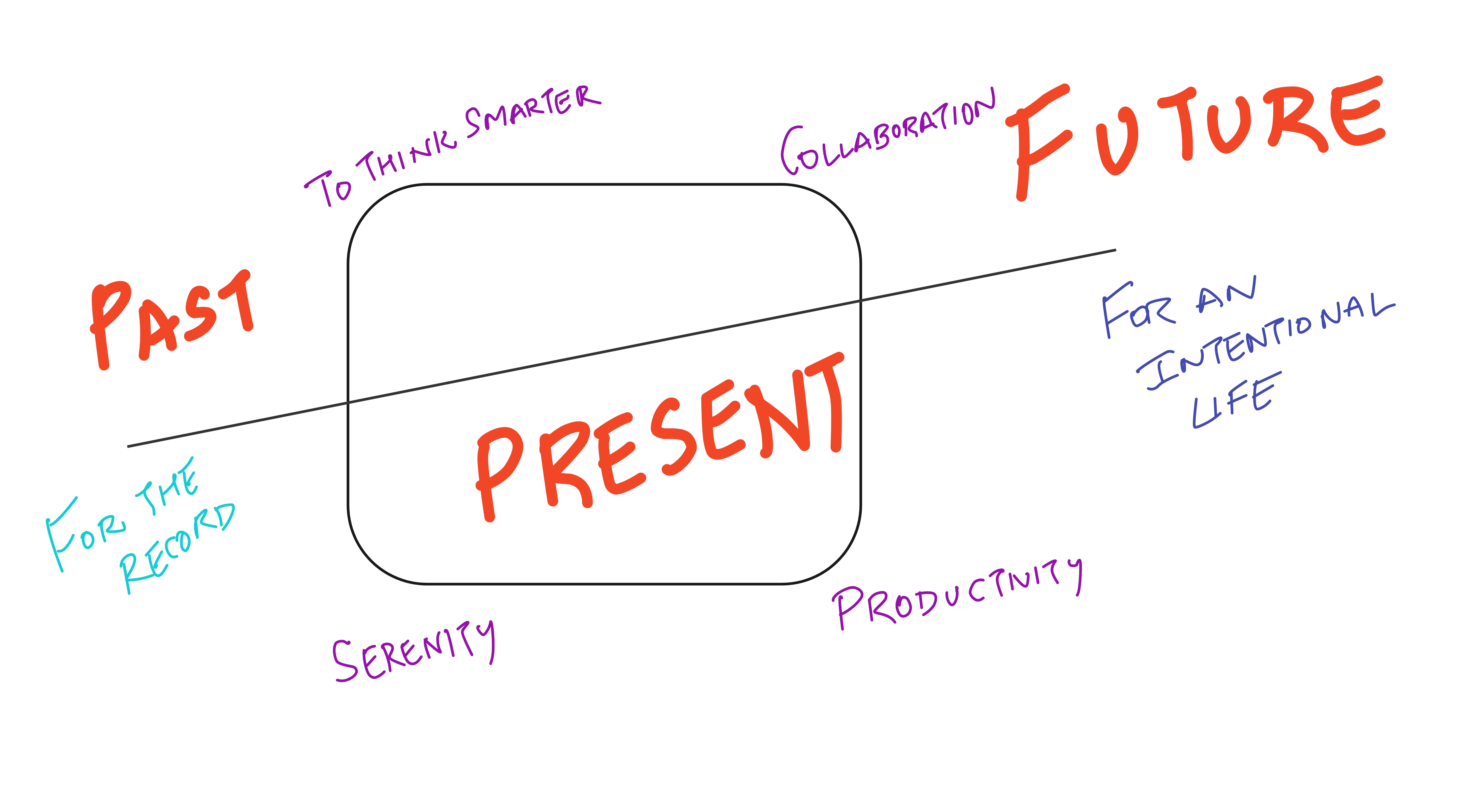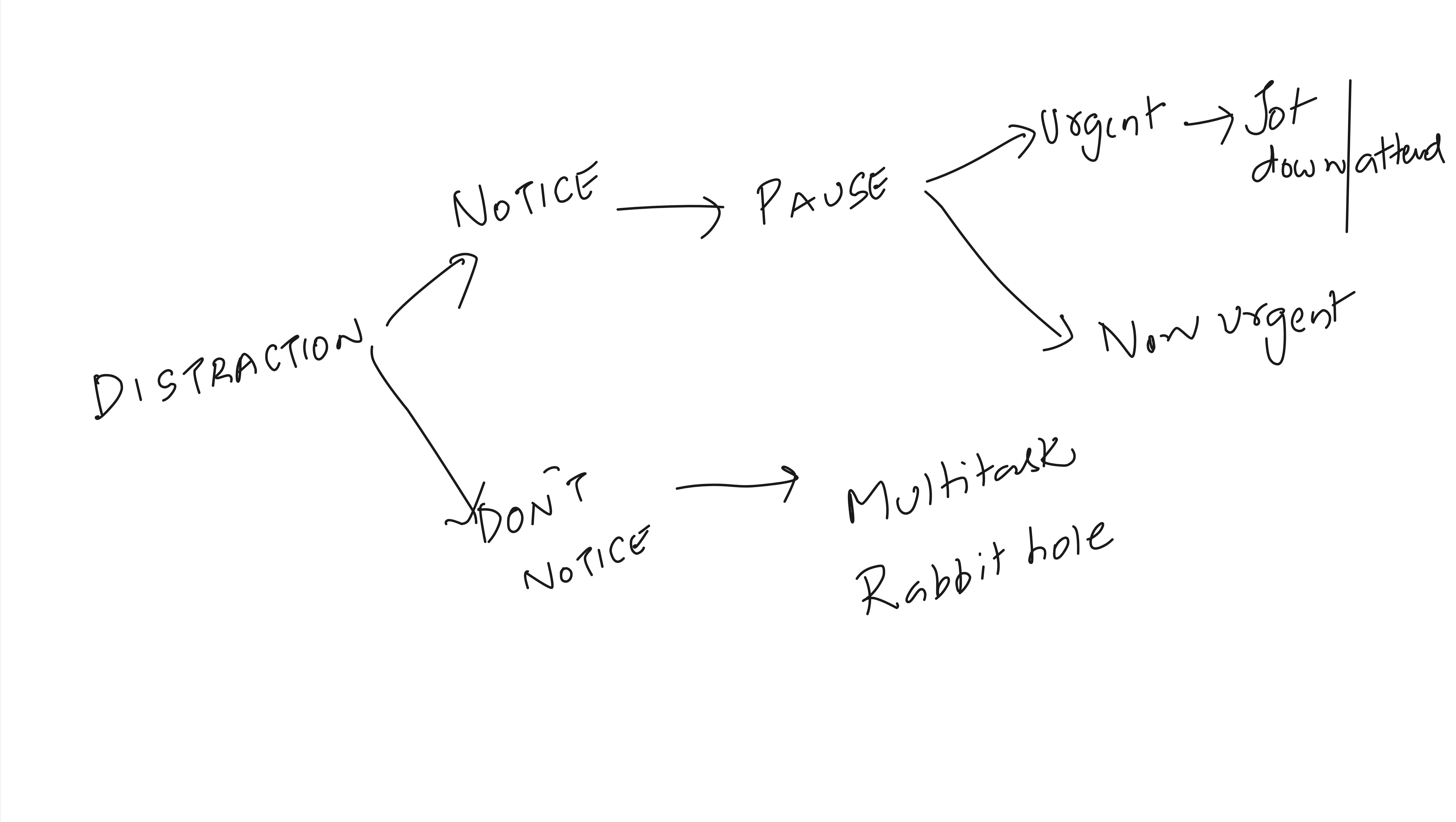Timeboxing
Contents
This blog post is a quick summary of the book “Timeboxing” written by Marc Zao Sanders

The chapters in the book are divided in to four sections - Believe, Plan, Do and Own.
Believe
It Works
The author makes a case of “Implementation Intention” as a big factor for getting things done. In a sense, by putting a task in a timebox, you are increasing the probability that the task gets done.
For the record
I have always kept a written log of whatever happens in a day in a simple org
file. Hence the message in the box thoroughly resonated with me. Once you keep a
running log of stuff that you have done each day, the journal becomes a great
source of looking back on what you have done on a monthly scale, quarterly scale
and yearly scale. You don’t have to rely on your weak memory to remember what
happened last week, last month, last year etc. It is all written down. You can
quickly search and answer all your reflective queries. The “timeboxing”
technique, if followed daily, will give more granularity to the daily activity
log. May be I should create a quick yasnippet that gives a timeboxing
org-table in the org file that I can then fill it in. There are times when I
forget to log my activities for a week. This happened during Dec 2023 when I was
down with Covid. This also happened a few weeks ago when i was completely
immersed in some project work. During these type of activities or times when I
don’t even have time to log my activity, how does timeboxing work
retrospectively ? My memory might just give me a glimpse of activities for the
missing days. But putting in a proper timebox for those tasks looks challenging.
I think I will anyway try incorporating timeboxing in my org file and see if I
can make any headway. For now, I have created a separate timeboxing subheader
in my orgjournal. Will try to see whether I am able to successfully timebox
with my current setup.
For Serenity
The author pitches “Timeboxing” as a way to bring serenity in our lives. By focusing and doing what we want to do with out time, we are saying NO to a million things that the world might want us to do. The million other things that we might end up doing in a world without timeboxing can come from algos that tease us to click on the next video, next blogpost, next URL. By commitment to an activity, we are warding off distractive tasks and unproductive tasks.
Let’s say you predecide to spend the next 12 hours on a set of activities and nothing else. Let’s say you accomplish those activities. I am guessing that you will end up feeling much more happier and content as compared to doing a set of activities in a reactive fashion. The fact that it promotes serenity in our chaotic world seems to be a fair argument FOR timeboxing
To Think Smarter
The practice of timeboxing necessitates that we spend an initial 15 minutes of the day or initial stages of a mini project in a state of cognitively demanding work of planning. This planning forces us to prioritize. This means that it is an exercise that will help you sort through the activities that sometimes you might end up doing because 1) Others want you to do 2) Distracting algos want you to do 3) Nice to do activities 4) activities that make you feel good. However all these type of activities are far less important than that activities that you deem to be important in your life. By forcing you to come up with a set of activities for timeboxing, the technique forces you to think smart.
Plan for 15 minutes each day and predecide activities for the next 15 hours.
To Collaborate
This is an easy sell. Once you timebox the activity and share it with others, it becomes easy to show your commitment towards a task.
For Productivity
The chapter has a nice visual that breaks down the productivity enhancements by timeboxing vs. no-timeboxing. The components are
- Making the right choices
- Hacking Parkinson’s so-called law
- No Multitasking
- Pockets of time
For an intentional life
The benefits of timeboxing can be in the near-term and long-term. By reflecting on your priorities in the near-term and in the long-term, you are able to look at the list, timebox on any activity that you think that will help you meet the near-term and long-term activities. I think you would have used this method in some form for any of the umpteen goals that you would have set for yourself and accomplished. The fact that you had set goals in the past and had reached them, presupposes that you had spent time deliberately achieving the goals. Well, you might not have logged about it and hence you might not appreciate the time spent on the activity that resulted in the goal. It is perfectly possible that you don’t even remember the effort put in to reach one of your mini-goals. But by actively timeboxing the effort, you have a rich life log that you can mine and understand your priorities.
May be I should look for a quick online tool to timebox my day. But somehow I
have found orgmode to be the best way to log stuff for many years and hence I
am sort of reluctant to look for fancy ways. May be an excel that goes with it.
Or may be an Org Table should be enough. For now I am going to use orgmode
as well as an orgtable to keep track of timeboxed activities
Takeaway
The first section of the book talks about several advantages of timeboxing. Here is a visual that summarizes the advantages of timeboxing

All the features nicely fit the sense of past, present and future timeline that we all experience at any point in our lives.
Plan
The basics
The author gives the pre-requisites to timeboxing as
- 15 minutes in a day
- Distraction free environment
- Physical cues to heighten your focus
- Digital calendar
Can everybody ‘timebox’ their day ? I mean what if the day evolves completely based on how the world’s outcomes ? May be I am exaggerating and finding an excuse not to timebox. In my daily life, most of the activities I end up doing are based on my volition. So, there is definitely a case for spending 15 min of my time planning the activities to timebox. I have always listed down the tasks that I need to do, for example, build a demo in x days. However I have never timeboxed it. I have only reviewed my schedule or log of tasks over a day or week to get a sense of “how much time I have spent on a specific demo ?”. May be I should try this out “timeboxing” approach for my next mini-project
The to-do list
A To-do list combined with calendar is what gives rise to “timeboxing”. In a sense, a to-do list is essential pre-requisite to even start timeboxing. I am sure most of us would have maintained a to-do list or still maintain one. The chapter emphasizes the possible categories in our to-do lists and lets the reader ponder on
- actively looking at to-do list regularly to prune
- looking at to-do list and think of ways to improve it
- look out for people who seem to be on top of their to-do list and ask for best practices
Today, I looked at my org-agenda and realized that there were items scheduled
more than 700 days ago. That shows that I have let me agenda items accumulate. I
have also been inefficient in clearing my to-do lists and have added up too many
tasks in my list. This clearly shows that I have sort of lost control on my
daily activities. I have become more reactive in my work and that is clearly
seen in the way I have been doing stuff in the last two years.
Boxmaking
One can use any digital calendar, pick the most important activities and timebox. The author says lays down just a few requirements to get the timeboxed calendar out
- title of the task : always a verb at the beginning of the title
- short description of the task
- color coding for the type of task
Never knew that Google calendar gives a nice way to color the tasks and gives a nice visual breakdown of the time spent on various tasks
Boxsizing
Pick a small, medium and large timebox for tasks and stick to it. These could be 15 min, 30 min and one hour duration timeboxes
Box-ordering
The way you order the timeboxes can be based on four considerations
- pre-existing commitments
- dependencies
- psychology
- energy
Do
This very Chapter
The author urges the reader to timebox the chapter and read through its contents. The essence of the chapter is to start small and experiment with the various aspects of timeboxing
Start-middle-end
The start of any timebox is decided by the initial planning phase in the day where you spend about 15 min deciding what to do in a day. If you are feeling inertia to start an activity, do the smallest unit of task that is related to the timeboxed activity. This will get you started. Once you get started, do have frequent milestone in the middle if it is a big timebox(hour timebox). I realized that this is essential as I tried having a timebox of 90 minutes for practicing Sitar. Noticed that it was physically tiring to play a raag for 90 minutes without adequate pauses. Any activity done more than hour needs to have some breaks. Even within an hour, it is better to have a few milestones along the way so that one does not lose energy. It is also important to the end the timebox as scheduled and not prolong the timebox just because you feel like it. Some bit of discipline in ending the timebox also goes a long way in continuing the task until the end of timebox even though you feel it as an unpleasant activity.
Pacing & Racing
The chapter talks about getting the timings right for various timeboxes across activities. Some activities, we might have to race ahead and some slow down depending on various factors. If we gamify the timebox activity, especially if it is a chore, it becomes easier to get it done. Gamifying could be incorporating a time limit to do a chore.
Ship something
The chapter talks about aiming for good enough instead of endless perfection. There is an example of a viral video of spiderman drawing in 10 minutes, 1 minute and 12 seconds. All the three pictures are shareable with kids and serve as an example of ‘good enough’.

For all the tasks you end up timeboxing, are you doing a good enough job or spending a lot of time in seeking perfection when it is not really needed
In order to collaborate, it is important to think about individual and collective productivity. Only by sharing one’s work, one can
- obtain different perspectives
- iterate
- get buy-in
- give credit
- get others to contribute
In a sense, this chapter really is very generic. I don’t know why the author decided to keep this chapter at all in this book.
Rabbit holes and Distractions
We all have experienced this in one form or the other. We start doing something and we get distracted and end up doing something completely different. The author offers the following hacks
- Make sure that your preconditions to a timeboxing task reduces the scope for distractions including procrastination
- Notice the interruptions
- Digital prompts
- Physical prompts
- Mental prompts
- Improve the response to the prompts
Here is a useful chart from the author:

The author is not totally against multi-tasking. He does say that there are some activities that could be multi-tasked with out compromising the quality of the outcome for the tasks involved.
Own
Build the habit
Tons of books have been written on habit formation. The author piggybacks on BJ Foggs model
BEHAVIOUR = MOTIVATION * ABILITY * PROMPT
Timeboxing is a metahabit, i.e. a habit that will help you form other habits. In this context, the key aspects of the BJ Foggs model are
- Motivation: Are you motivated enough to do a specific task ?
- Ability: Do you have the ability to do a specific task ? If you think you don’t, chunk it and do a micro task associated with it
- Prompt: What are the cues that will enable you to timebox ?
If you anchor timeboxing to a specific habit that you already have, it is easy to get it going.
The book by BJ Foggs is a NY times best seller. I came across a reference to BJ Foggs in a book titled, “Stolen Focus” and since then always wanted to read it. May be I will someday. A perfect chance to jot down now and put in my todo list
Mindfulness
The author says that timeboxing is similar to mindfulness. In a sense it is. Once you focus your entirety on a task and nothing else, you are supremely mindful of all the things relating to activity. I get the same feeling when I am playing Sitar. While my mind decides on what thihayee to play, where to start the thihayee, where to end it, what taan should precede the thihayee, i am lost in time so to speak. Even though my brain is thinking actively and my hands are playing the instrument, my subconscious mind cuts out all the distractions. Of course I have to prime my environment so that obvious prompts that have the capacity to interrupt cannot enter my practice room.
Better breaks
It goes without saying that one cannot timebox one activity after another. It is madness. One needs to have a space for rest too. May be the rest activity itself can be timeboxed so that you can review the metrics later.
Better sleep
Another obvious prerequisite for doing good work. But many of us neglect it and succumb to distractions.
Tools and Tech
The author mentions a few for namesake but really says one does not need anything more than a digital calendar and a word doc.
Its Working
The author urges the reader to understand the difference between doing and working and gives a table of questions to do a self-check. The author manages the summarise the 4 key benefits of timeboxing
- Agency
- Higher Power
- Meta-habit
- More productive
Takeaway
The book is very interesting as I have never timeboxed my activities on a
regular day to day basis. There are versions of to-do lists, kanban
principles, org-mode enabled org-agenda views that I have had on a regular
basis to inculcate and sustain new habits. So far it has worked well. But this
book puts a time dimension on it explicitly. Will experiment with some of the
ideas mentioned in the book and see if it makes it a difference. Definitely
worth reading the book to get the whole mental dump from the author based on his
timeboxing experiences.
I think out of all the benefits, the fact that the timeboxing can serve as a meta-habit resonates a lot with me. Timeboxing habit helps you in forming other habits.